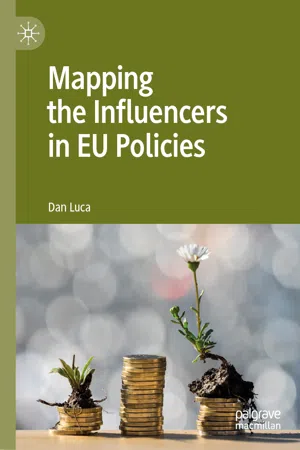This chapter provides an introduction to non-EU institutional entities which are represented in Brussels. It offers an explanation of the market on the macro level (number of organizations and people working in these sectors), but also presents at least three practical examples for each category.
1 Brussels—Pole of Power
When Robert Schuman presented his Schuman declaration on 9 May 1950, it is hard to imagine that he could have predicted what this organisation would look like almost 70 years later. Between the Council, the Parliament and the Commission as well as many smaller agencies and offices, both in Brussels and across the globe, the EU employs some 55,000 people. They work in several impressively large buildings around the European quarters as well as in other parts of the Belgian capital and further afield. The work they carry out range from drivers and receptionists to some of the most powerful men and women in the world such as the EU’s Trade Commissioner, currently the Swedish commissioner Cecilia Malmström.1 The bulk of this staff works within the European Commission which is split into 31 Directorate-Generals (DGs), 16 Service Departments and six Executive Agencies. Among the most influential DG’s are Trade, Competition, Maritime Affairs and Fisheries and Agricultural and Rural Development. The single largest DG in terms of staff is Translations with some 4000 employees.2 The EU also employs staff at the Court of Justice and Court of Auditors in Luxembourg, at the European Central Bank in Frankfurt as well at many agencies across Europe such as the European Fisheries Control Agency in Vigo in Spain, the European Chemicals Agency in Helsinki in Finland and the European Union Agency for Law Enforcement Training in Budapest, Hungary.3
The soon-to-be EU27 has some 450 million inhabitants, cover an area of 4215 square kilometers and have a GDP of 13 trillion euros. Eight of the 50 largest companies in the world are headquartered in the EU27.4 The only countries in the world as large and powerful as the EU are the US with a population of 325 million and a GDP of around 17 trillion euros5 and China with a population of 1.4 billion and a GDP of 11 trillion euros.6 The US federal services employ, by comparison, about 180,000 people in Washington, DC.7 In other words, the EU is a large and powerful organisation working across a range of areas and with influence reaching far beyond the borders of the European Union. This makes the EU civil service one of the most influential and powerful civil services in the world and this in turn means that having a physical presence at the heart of this process is crucial to all sorts of organisations and companies, from inside the EU and from around the world.
Every decision made in Brussels follows a strict and pre-defined process from Commission to Council to Parliament.8 The voters and consumers of news at home may be familiar with the lines of cars arriving at the back entrance of the Council-building on the Rue de la Loi and the images of all the leaders of Europe sitting around a massive table. But at that point, most proposals have been carefully prepared and discussed at the so-called Sherpa-level. The Permanent Representatives to the EU, of which each member state has one, are the day-to-day presence of the member states in Brussels. Based in offices in or around the European quarters, and not to be confused with the national embassies of the member states to the Kingdom of Belgium, these “permreps” play a crucial role in negotiations. Each meeting of the Council, regardless of which topic and thus which national minister is involved, has been deliberated through an intensive network of diplomatic staff from each member state. Certainly, for less sensitive areas, it is often left for the minister to just make some final, minor adjustments and sign the dotted line. These “permreps” are also an invaluable source of information to feed back to the capitals. This work is often aided by preparatory work done by the national missions to the other member states ...
